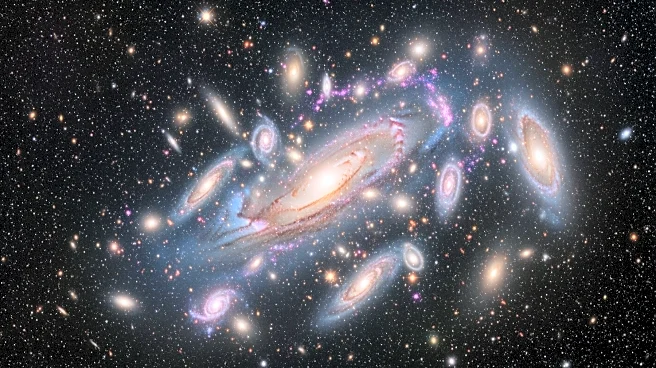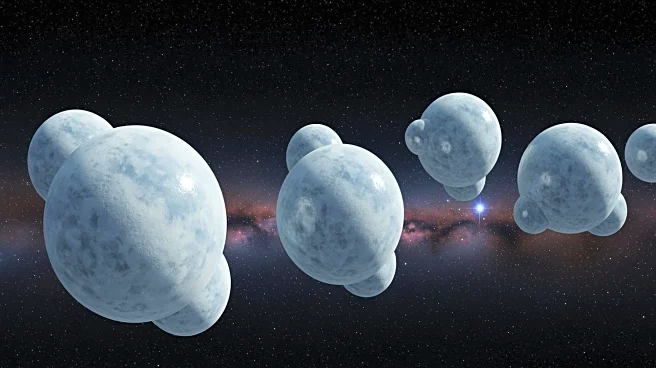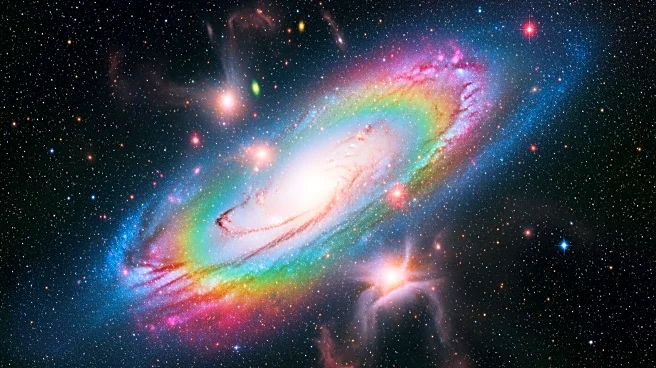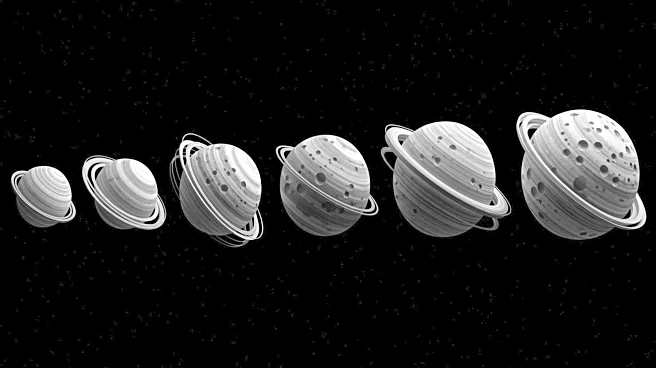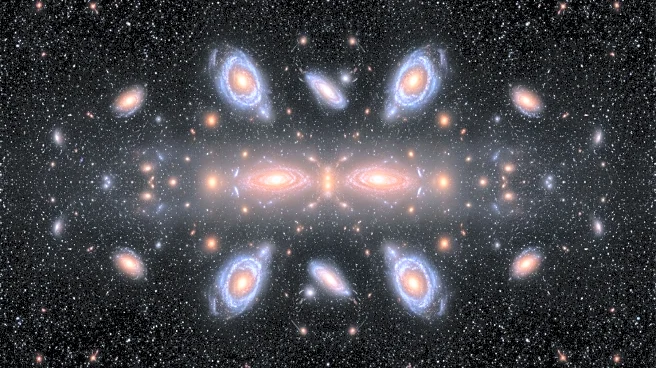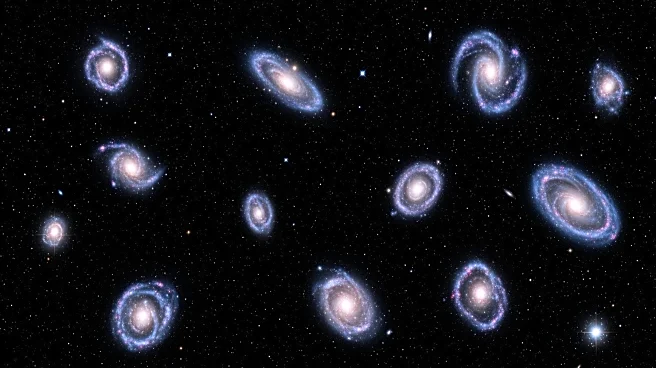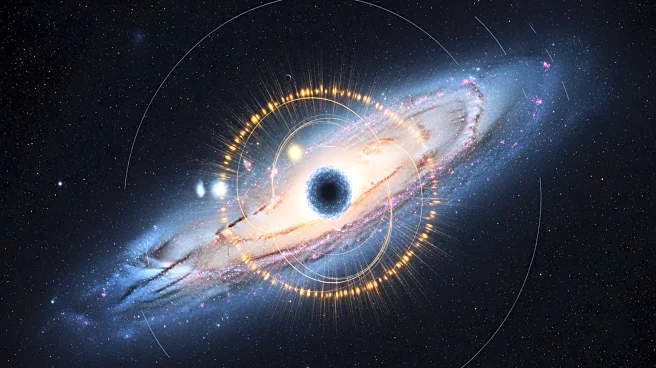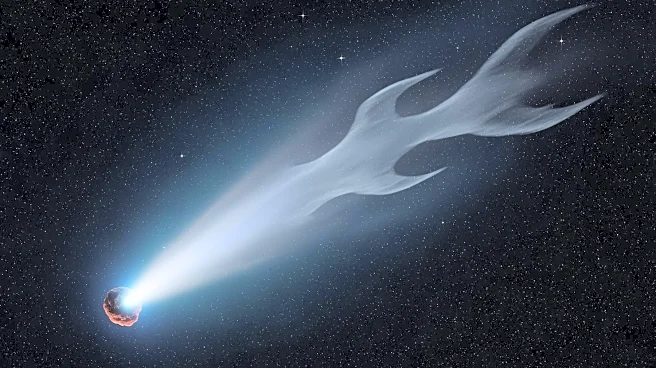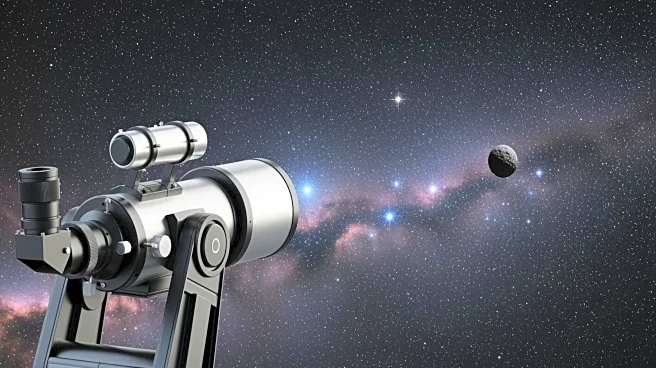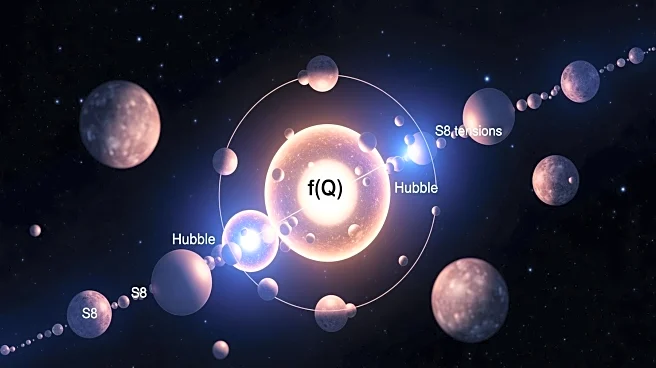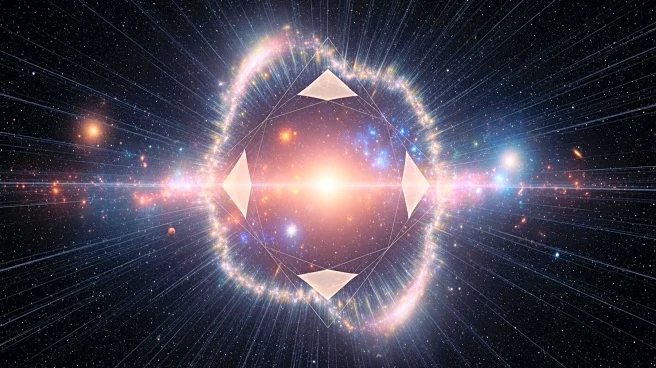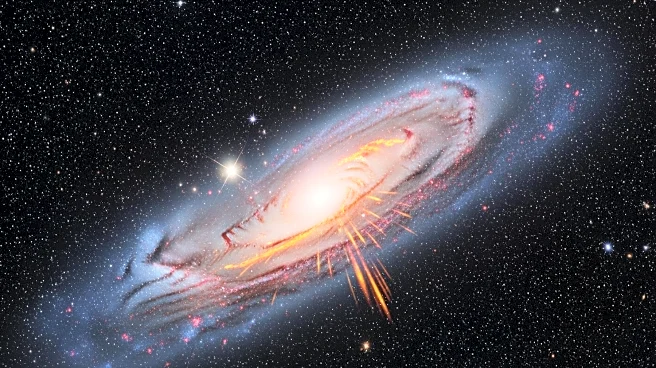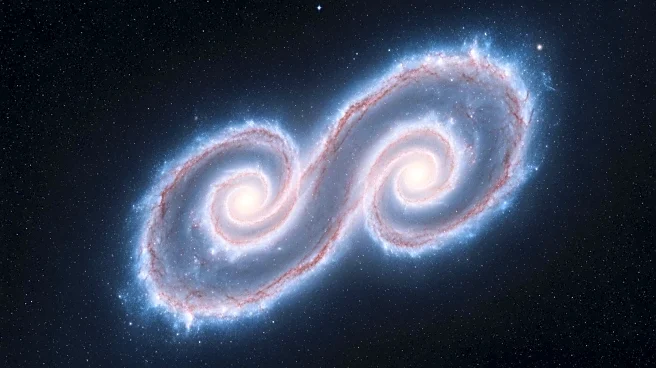What's Happening?
Astronomers have released a new catalog of massive galaxy clusters, compiled using data from the Dark Energy Survey (DES). This catalog provides insights into the evolution of the universe by tracing the distribution of dark matter and dark energy, which
are crucial in understanding the universe's accelerated expansion. The DES utilized the Dark Energy Camera on the Blanco Telescope in Chile to gather data over six years, revealing tens of thousands of clusters across billions of light-years. These clusters serve as cosmic signposts, helping scientists test cosmological models and understand the universe's structure. The catalog aims to address the 'S8 tension,' a discrepancy between observed and predicted matter clumping in the universe.
Why It's Important?
The creation of this galaxy cluster catalog is significant for cosmology as it provides a comprehensive dataset to test the Lambda-Cold Dark Matter (LCDM) model, the leading cosmological model. Understanding dark matter and dark energy is crucial for explaining the universe's accelerated expansion. The catalog's data could help resolve the 'S8 tension,' a key issue in cosmology. As future telescopes like the Vera C. Rubin Observatory and NASA's Nancy Grace Roman Space Telescope come online, they will expand this catalog, offering deeper insights into the universe's history and structure formation.
What's Next?
With the upcoming deployment of advanced telescopes, astronomers expect to significantly expand the galaxy cluster catalog. These future observations will allow scientists to track the formation of clusters over a more extensive portion of the universe's history, providing further tests for cosmological models. The expanded catalog will enhance our understanding of dark matter and dark energy, potentially leading to breakthroughs in cosmology.
